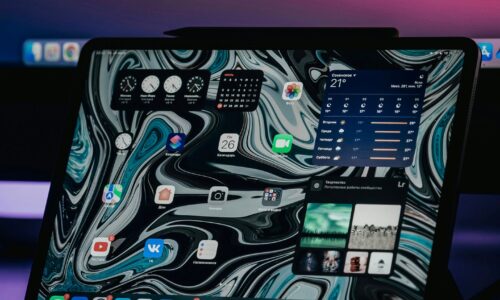Picture this: a Bavarian accordion player jamming with a Nigerian drummer, a Japanese koto virtuoso riffing alongside an Argentine tango singer, and a DJ in Brooklyn spinning tracks that blend beats from India, Brazil, and France. This isn’t a far-off utopia or some dream sequence from an over-caffeinated music enthusiast’s brain. This is the reality of cross-cultural collaboration in sound — where genres and cultures collide to create something utterly beautiful. And let’s face it, when cultures come together, you get music that makes you want to dance, cry, and think about life all at once.
So why is music the ultimate unifier, bringing the world together in ways politicians can only dream of? How do global music brands and streaming services play a role in breaking down borders, both cultural and sonic? Grab your headphones, because we’re about to dive into the universal sound of collaboration.
Global Beats: Breaking Down Borders with Music
We’ve all experienced the joy of hearing a song from a different culture and feeling something — whether it’s a heartbeat syncopated to a Brazilian samba or the wistful sound of an Irish folk tune. Music doesn’t need a translation to connect. In fact, it transcends language, culture, and, dare we say it, logic. Enter cross-cultural collaborations in sound, where artists from different parts of the world blend their influences to create groundbreaking genres.
The Global Streaming Revolution
The internet has opened up a whole new world of musical possibilities. Global music brands and streaming platforms like Spotify, Apple Music, and YouTube have become more than just places to stream tracks. They’re digital bridges — connecting artists from all corners of the globe in ways we couldn’t have imagined just a few decades ago.
Spotify, for instance, has redefined the way we discover music. No longer are we confined to local radio stations or city-specific scenes. With Spotify Wrapped annually offering us a peek into the diversity of our musical taste, cross-cultural collaborations are flourishing like never before. Whether you’re listening to Shakira’s Spanish pop or BTS blending Korean lyrics with English choruses, the global streaming services are helping us expand our playlists, culture by culture.
But it’s not just the big-name artists getting all the attention. SoundCloud is a breeding ground for indie musicians from every corner of the world, uniting genres that could otherwise never meet — Afrobeat mixing with EDM, jazz with rap, or electronic chill with flamenco guitar. The possibilities are endless, and artists can now share their fusion with the world, without needing to negotiate the red tape of traditional labels.
Cross-Cultural Music: A Match Made in Sound Heaven
Let’s take a moment to celebrate some of the partnerships that have made waves in the music world:
- Santana and Rob Thomas: Who would’ve thought a Latin rock legend and the lead singer of Matchbox 20 would create a crossover smash with “Smooth”? That track blended Latin rock with pop rock, propelling both artists into musical legend status.
- Diplo and Major Lazer: Here’s where the magic happens: Diplo, the DJ extraordinaire, has worked tirelessly to bring dancehall, reggae, and electronic music into the mainstream. Major Lazer has become the embodiment of cross-cultural music collaboration, taking the tropical sounds of the Caribbean and blending them with global club anthems. The result? A string of hits that make you want to dance, even if you have no idea what language the lyrics are in.
- Angelique Kidjo and Philip Glass: One of the most iconic examples of global collaboration, Angelique Kidjo (a Grammy-winning Afrobeat singer) teamed up with Philip Glass (an American minimalist composer) to create an album blending West African rhythms with Glass’s symphonic structures. The result: musical gold, blending classical and African music in a way that had never been done before.
Instruments of Unity: From Djembes to Synthesizers
If there’s one thing that’s true across cultures, it’s the power of an instrument to bring people together. Instruments have always been the storytellers of our world, but in this day and age, they’ve become the vessels for cultural exchange.
Consider the Bansuri, the bamboo flute that has charmed the ear of listeners from India to California. Used traditionally in Indian classical music, this simple yet beautiful instrument is now crossing boundaries as more and more Western musicians adopt it into their jazz, blues, and even pop compositions.
Then there’s the Hang Drum — a Swiss percussion instrument that looks like a UFO and sounds like pure serenity. The Hang Drum is the perfect example of how an instrument designed in one part of the world can spark an entire cross-cultural music movement. Don’t believe me? YouTube has more videos of Hang Drum collaborations than we can count. Expect to hear everything from a Dutch folk singer to a New Zealand beatboxer using it to create an enchanting fusion of melodies.
The New Face of Cross-Cultural Collaboration: Technology
The intersection of technology and music is where things get truly exciting. Enter Ableton Live, Pro Tools, and GarageBand — software that’s changing the way musicians collaborate across the globe. Whether you’re making beats in Brooklyn, recording a guitar solo in Buenos Aires, or layering vocals in Lagos, technology has allowed musicians to collaborate without ever being in the same room (or even country).
With tools like Splice and Landr, musicians can share stems (individual pieces of music) with ease and create sounds that wouldn’t be possible in a traditional studio environment. This means artists from different continents can record a track without having to board an airplane or even make eye contact. Talk about the future of music-making!
Funny Yet Inspirational
Now let’s lighten things up. Cross-cultural collaborations in music have more than just serious, deep, artistic value. They give us some truly hilarious and joyful moments. Who can forget when CeeLo Green teamed up with The Muppets for a holiday album? Or when Snoop Dogg dropped a reggae album as Snoop Lion? These moments aren’t just entertainment, they’re proof that music is a universal language — and no one’s too cool to experiment. Sometimes the best collaborations come when we least expect them, when artists embrace the fun and spontaneity of mixing sounds from entirely different cultural backgrounds.
Key Players in Cross-Cultural Collaboration
- Native Instruments: With their top-notch virtual instruments, Native Instruments empowers artists to mix world sounds with modern genres. Who knew the Tabla could find a home in EDM?
- Splice: Providing access to an endless library of loops and sounds from across the globe, Splice helps artists seamlessly create collaborations without worrying about geographical limits.
- Ableton Live: One of the most versatile DAWs (Digital Audio Workstations) out there, Ableton Live lets musicians from every culture come together and share their beats, riffs, and samples in real-time.
The world is more connected than ever, and music is leading the charge. Thanks to streaming platforms, instruments, and technology, the barriers that once divided cultures in music are slowly disappearing. So, whether you’re tuning into a Spanish flamenco fusion album or grooving to an African jazz remix, remember: every beat you hear is part of a much larger symphony — one that’s shaping the future of music as a global, unifying force.
Cross-cultural collaborations in sound, global music brands, streaming services, cross-cultural music, Spotify, Apple Music, YouTube, Major Lazer, Afrobeat, Diplo, Hang Drum, Native Instruments, Ableton Live, Splice, musical collaboration




